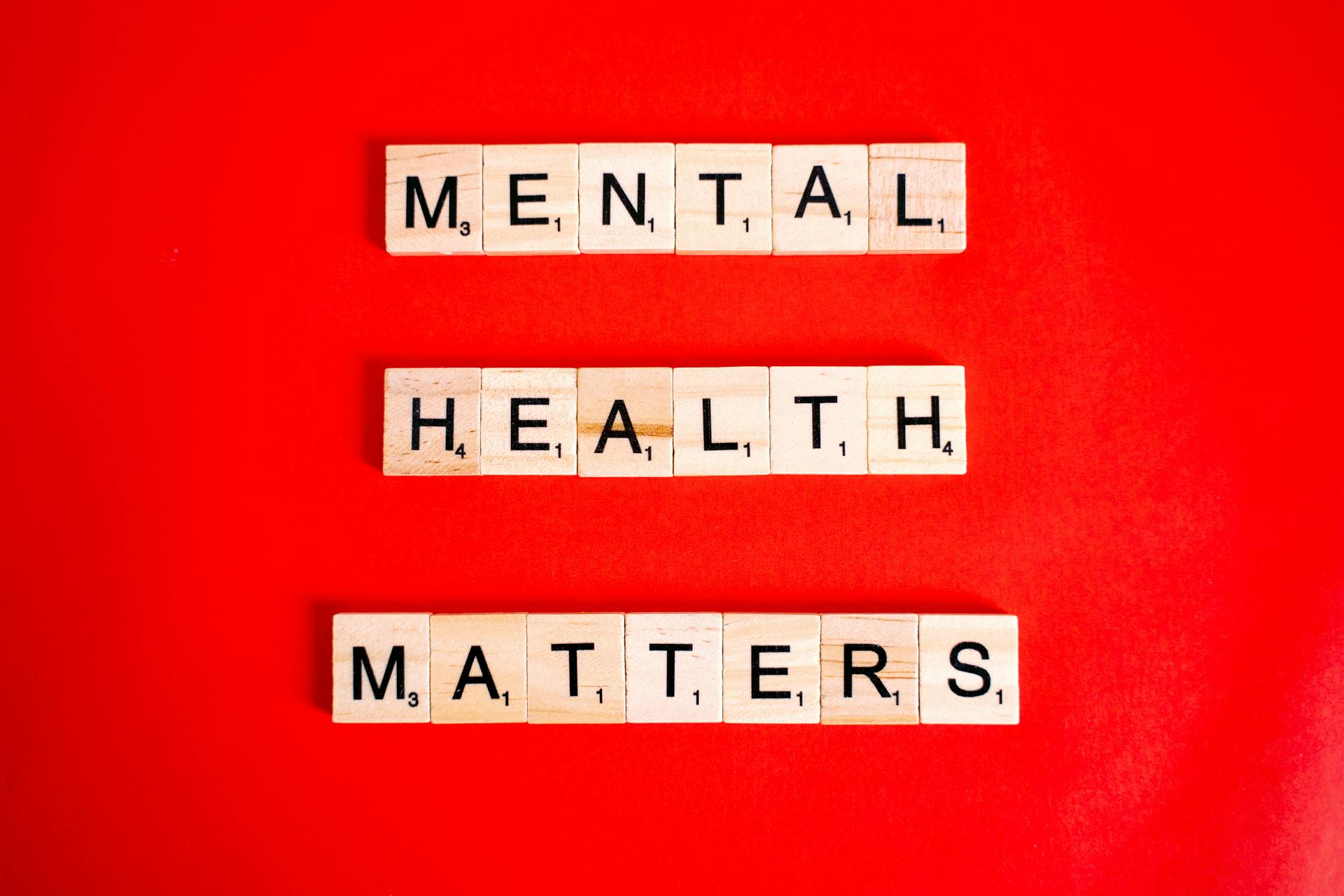
Cognitive behavioral therapy is a therapeutic approach that is based on the principles of cognitive and behavioral psychology. The core principle underlying cognitive behavioral therapy is that thoughts, emotions, and behaviors are all interconnected and that they can influence each other. This means that our thoughts can influence our emotions and our behavior, and our emotions can influence our thoughts and our behavior. Our behavior can also influence our thoughts and emotions.
The cognitive part of cognitive behavioral therapy focuses on helping people to identify and change the distorted thoughts that contribute to their emotional and behavioral problems. The cognitive part of cognitive behavioral therapy also focuses on helping people to develop more realistic and effective ways of thinking. The behavioral part of cognitive behavioral therapy focuses on helping people to change the problematic behaviors that are causing them difficulties.
Cognitive behavioral therapy is an effective treatment for a wide variety of psychological problems, including anxiety disorders, mood disorders, eating disorders, substance abuse disorders, and personality disorders.
You might like: Exemplifies Extrinsically Motivated Behavior
What is cognitive behavioral therapy?
Cognitive behavioral therapy (CBT) is a type of psychological therapy that helps people change their negative thinking and behavior patterns. CBT is based on the idea that our thoughts, feelings, and behaviors are all interconnected, and that negative thinking patterns can lead to negative behaviors.
CBT has been shown to be effective in treating a wide variety of mental health conditions, including depression, anxiety, eating disorders, and substance abuse. The goal of CBT is to help people identify and change the negative thoughts and behaviors that are keeping them from living a happy and productive life.
CBT is usually conducted in weekly, 50-minute sessions, with the number of sessions depending on the severity of the problem being treated. CBT is typically a short-term treatment, lasting 12-20 weeks. However, some people may need to continue treatment for a longer period of time to maintain the gains they have made.
CBT is usually conducted by a trained therapist, who will help you identify your negative thoughts and behaviors and work with you to change them. CBT is a collaborative treatment, which means that you will be actively involved in your own care.
If you are interested in learning more about CBT, please talk to your doctor or mental health provider.
A different take: Physical Therapy Sessions
What are the main principles of cognitive behavioral therapy?
Cognitive behavioral therapy (CBT) is a type of psychotherapy that helps people change their negative thinking and behavior patterns. CBT is based on the idea that our thoughts, feelings, and behaviors are all interconnected, and that our thoughts can influence our behavior.
CBT has been shown to be effective in treating a variety of mental health disorders, including depression, anxiety, eating disorders, substance abuse, and personality disorders. CBT is usually provided in a individual or group setting, and typically lasts for 10-20 sessions.
The main principles of CBT are as follows:
Cognitive Change: CBT is based on the premise that our thoughts influence our emotions and behavior. If we can change our thinking, we can change our emotional and behavioral responses to situations.
Behavioral Change: In order to change our behavior, we need to first identify the negative behaviors that we want to change. We can then work on changing these behaviors by learning new, more positive behavior patterns.
Learning Principles: CBT is based on the principle of learning, which states that we can learn new information and skills, and that we can use these new skills to change our thoughts, feelings, and behavior.
CBT is a collaborative process between the therapist and the client, and it is important that the therapist and client work together to set goals, identify negative thought and behavior patterns, and learn new skills.
Worth a look: Similar Behavior
How does cognitive behavioral therapy work?
Cognitive behavioral therapy is a type of therapy that helps people change their negative thinking and behavior patterns. It is based on the idea that our thoughts, feelings, and behaviors are all interconnected, and that by changing our thoughts, we can change our behavior.
Cognitive behavioral therapy has been shown to be effective in treating a variety of mental health disorders, including depression, anxiety, eating disorders, and substance abuse. It can be used in both individual and group settings, and can be adapted to meet the needs of each individual.
The first step in cognitive behavioral therapy is to identify the negative thoughts and beliefs that are causing negative behavior. Once these thoughts and beliefs are identified, they can be challenged and replaced with more realistic and positive ones. This process can be difficult, and it may take some time to achieve lasting results.
Behavioral therapy can also be used to help people change their behavior. This may involve learning new skills, such as problem-solving or coping with stress, or changing the way you respond to difficult situations. Behavioral therapy can also involve exposure therapy, which is designed to help people confront their fears and learn to manage their anxiety.
Cognitive behavioral therapy is a relatively new type of therapy, but it has been shown to be an effective treatment for a variety of mental health disorders. If you think you might benefit from this type of therapy, talk to your doctor or mental health provider.
Check this out: Effective Scrum Master
What are the main goals of cognitive behavioral therapy?
Cognitive behavioral therapy is a type of therapy that is focuses on helping people change their thoughts and behaviors in order to improve their mental health. The main goals of cognitive behavioral therapy are to help people identify and manage their emotions, to develop coping strategies for dealing with stress and difficult situations, and to improve their communication and problem-solving skills.
Cognitive behavioral therapy can be used to treat a wide variety of mental health conditions, such as anxiety, depression, eating disorders, and substance abuse. It is often used in combination with other types of therapy, such as medication or psychoeducation.
The first step in cognitive behavioral therapy is to help the person identify their thoughts and feelings. This can be done through journaling, discussing past events, or role-playing. Once the person is aware of their thoughts and emotions, they can start to challenge and change them. For example, if someone is always thinking negative thoughts about themselves, they can learn to reframe those thoughts in a more positive light.
The second step is to help the person develop coping strategies for dealing with stress and difficult situations. This may involve teaching relaxation techniques, problem-solving skills, and how to manage triggers.
The final goal of cognitive behavioral therapy is to improve the person’s communication and problem-solving skills. This can be done through role-playing, Ravioli said. People who have trouble communication their needs or assertiveness can learn how to do so in a healthy way.
Cognitive behavioral therapy is a useful tool for helping people improve their mental health. It can be used to treat a wide variety of conditions and can be tailored to each individual’s needs.
Take a look at this: Bcbs Behavioral Health
What techniques are used in cognitive behavioral therapy?
Cognitive behavioral therapy (CBT) is a type of psychotherapy that helps people change their negative thinking and behavior patterns. CBT is based on the idea that our thoughts, emotions, and behaviors are all interconnected, and that changing our thoughts can lead to positive changes in our emotions and behaviors.
CBT has been shown to be effective in treating a variety of mental health conditions, including anxiety, depression, post-traumatic stress disorder, and eating disorders. CBT is usually provided by a licensed mental health professional, such as a psychiatrist, psychologist, or social worker.
There are a variety of techniques that can be used in CBT, and the specific techniques used will vary depending on the individual and the specific problem being addressed. Some common CBT techniques include:
• Identifying and changing negative thoughts and beliefs: This involves helping the individual to identify negative, distorted, and unhelpful thoughts and beliefs, and to replace them with more realistic and helpful ones.
• Challenging and changing negative behaviors: This involves helping the individual to identify and change behaviors that are contributing to the problem.
• Exposing oneself to feared situations: This involves gradually exposing the individual to the situations or activities they are afraid of, in a safe and controlled way, in order to help them overcome their fear.
• Building new skills and positive behaviors: This involves teaching the individual new skills and helping them to practice and build positive behaviors.
How is cognitive behavioral therapy different from other types of therapy?
Cognitive behavioral therapy (CBT) is a type of psychotherapy that helps people change their negative thinking and behavior. CBT is different from other types of therapy because it focuses on the here-and-now, rather than on the past. CBT also uses a more active and collaborative approach than other therapies.
CBT is based on the idea that our thoughts, feelings, and behaviors are all interconnected. That means that if we want to change our behavior, we need to first change our thinking. CBT therapists work with their clients to help them identify and challenge negative thoughts and beliefs. Once these negative thoughts are challenged, clients can start to change their behavior.
CBT has been shown to be effective in treating a variety of mental health conditions, such as depression, anxiety, and eating disorders. CBT has also been found to be helpful in treating physical health conditions, such as chronic pain and high blood pressure.
What are the benefits of cognitive behavioral therapy?
Cognitive behavioral therapy (CBT) is a type of psychotherapy that helps people change their thinking and behavior in order to improve their lives.CB therapy has been shown to be effective in treating a variety of mental health disorders, including depression, anxiety, post-traumatic stress disorder, eating disorders, and substance abuse.
The goal of CBT is to help people learn how to change their thoughts, emotions, and behaviors in order to improve their lives. CBT teaches people how to identify and correct negative thinking patterns, develop healthy coping skills, and make positive changes in their lives.
One of the main benefits of CBT is that it is a short-term treatment option. CBT usually lasts for 12-20 weeks, and people often see significant improvements in their symptoms during this time. CBT is also an effective treatment for people who have not responded well to other types of treatment, such as medication.
Another benefit of CBT is that it can be used to treat a wide range of mental health disorders. CBT has been shown to be effective in treating depression, anxiety, post-traumatic stress disorder, eating disorders, and substance abuse.
CBT is also a flexible treatment option that can be adapted to meet the needs of each individual. CBT can be done in individual, group, or family therapy sessions. It can also be done in an outpatient or inpatient setting.
CBT is a safe and effective treatment option for people of all ages. CBT has few side effects and can be used in combination with other treatment options.
If you are considering CBT for yourself or a loved one, it is important to find a qualified CBT therapist. CBT is most effective when it is done by a trained and experienced therapist who is familiar with your specific situation.
What are the risks of cognitive behavioral therapy?
Cognitive behavioral therapy is a form of psychological treatment that has been shown to be effective for a variety of mental health problems, including anxiety and mood disorders. However, like any treatment, there are potential risks associated with cognitive behavioral therapy. These risks should be considered before beginning treatment and monitored throughout the course of treatment.
One of the potential risks of cognitive behavioral therapy is that patients may experience an increase in anxiety during treatment. This is because cognitive behavioral therapy often involves discussing and exploring one's fears and anxieties. While this can be beneficial in the long-term, it can also be anxiety-provoking in the short-term. It is important to discuss any increase in anxiety with your therapist so that they can help you manage it and determine if it is an expected part of treatment.
Another potential risk of cognitive behavioral therapy is that patients may become overly reliant on the therapist. This is because cognitive behavioral therapy relies heavily on the relationship between the therapist and the patient. While this can be beneficial, as it can help build trust and rapport, it can also lead to patients becoming too dependent on the therapist. This is why it is important to have realistic expectations for therapy and to be aware of the possibility of developing a dependency.
Finally, there is the risk that patients may not be able to properly apply the skills they learn in cognitive behavioral therapy to their everyday lives. This is because cognitive behavioral therapy requires patients to actively practice the skills they are learning. If patients are not able to apply these skills outside of therapy, they may not be able to fully benefit from the treatment.
Overall, cognitive behavioral therapy is a safe and effective treatment for many mental health problems. However, like any treatment, there are potential risks associated with it. These risks should be considered before beginning treatment and monitored throughout the course of treatment.
You might like: Risk Management Principle
Who can benefit from cognitive behavioral therapy?
Cognitive behavioral therapy (CBT) is a type of psychotherapy that helps people change their negative thinking and behavior patterns. CBT has been shown to be an effective treatment for a variety of mental health conditions, such as depression, anxiety, post-traumatic stress disorder, and eating disorders.
The first step in CBT is to identify the negative thoughts and behaviors that are contributing to the mental health problem. Once these are identified, the therapist will work with the person to develop new, more positive ways of thinking and behaving. CBT usually involves weekly sessions that last for a few months.
CBT can be an effective treatment for people of all ages. It has been shown to be particularly helpful for teens and young adults, as they are often more open to change than older adults. CBT is also an effective treatment for people who have multiple mental health conditions.
If you are considering CBT for yourself or a loved one, it is important to find a therapist who is experienced and trained in this type of therapy. You can ask your doctor for recommendations or search for a therapist online.
Frequently Asked Questions
What are the principles of Cognitive Behavior Therapy?
The principles of Cognitive Behavior Therapy are: - Patients need to be able to set goals in order to make a strategic plan on accomplishing them. - Physical strategies are used to counteract unpleasant physical symptoms associated with their emotions. These strategies include breathing exercises and meditation.
What is the basic principle of CBT?
The basic principle of CBT is that your ideas, feelings, physical sensations, and actions are all connected. This means that if you have negative thoughts or feelings about a situation, it can lead to unpleasant physical reactions and behaviors. CBT helps you break these negative patterns by teaching you how to identify and change the underlying thoughts and feelings.
What is the difference between behavior and cognitive therapy?
Cognitive therapy is a type of treatment that uses techniques like problem solving, relaxation techniques, and restructuring of negative thoughts in order to help treat mental health disorders such as posttraumatic stress disorder (PTSD). Behaviour therapies aim to change observable behaviors. Cognitive therapy focuses on the underlying thoughts and emotions that contribute to those behaviors.
What is the 6th principle of Cognitive Behavior Therapy?
CBT Principle 6 is that cognitive behavior therapy is educational.
What factors influence the types of cognitive behavioral techniques a therapist uses?
Therapist's: Personal beliefs (e.g., metatheory of cognitive Behavioral Therapy, which likely influences the selection of techniques), training and experience in CBT, and with the client
Sources
- https://ezcareclinic.io/what-principle-underlies-cognitive-behavioral-therapy/
- https://www.coaching-online.org/which-principle-underlies-cognitive-therapy/
- https://www.drugtestpanels.com/blogs/articles/what-principle-underlies-cognitive-behavioral-therapy
- https://onlinehealthmedia.com/what-principle-underlies-cognitive-behavioral-therapy/
- https://psychcentral.com/pro/the-basic-principles-of-cognitive-behavior-therapy
- https://quizlet.com/497630334/psy-2012-general-psychology-quiz-16-flash-cards/
- https://therapytoday.net/what-principle-underlies-cognitive-therapy/
- https://quizlet.com/458944071/psychology-5-flash-cards/
- https://www.apa.org/ptsd-guideline/patients-and-families/cognitive-behavioral
- https://www.verywellmind.com/what-is-cognitive-behavior-therapy-2795747
- https://www.mayoclinic.org/tests-procedures/cognitive-behavioral-therapy/about/pac-20384610
- https://www.nhs.uk/mental-health/talking-therapies-medicine-treatments/talking-therapies-and-counselling/cognitive-behavioural-therapy-cbt/overview/
- https://www.psychology.org/resources/cognitive-behavioral-therapy/
- https://en.wikipedia.org/wiki/Cognitive_behavioral_therapy
- https://nij.ojp.gov/topics/articles/what-cognitive-behavioral-therapy
- https://www.healthline.com/health/cognitive-behavioral-therapy
- https://www.mind.org.uk/information-support/drugs-and-treatments/talking-therapy-and-counselling/cognitive-behavioural-therapy-cbt/
- https://www.ncbi.nlm.nih.gov/books/NBK279297/
- https://spencerinstitute.com/principles-of-cognitive-behavior-therapy/
- https://direct-therapy.org.uk/what-are-the-key-principles-of-cognitive-behavioral-therapy/
- https://journals.sagepub.com/doi/full/10.1177/1755738012471029
- https://www.whitehartclinic.co.uk/blog/basic-principles-cognitive-behavioural-therapy-cbt
- https://direct-therapy.org.uk/what-are-the-crucial-principles-of-cognitive-behavioral-therapy/
- https://psychiatryonline.org/doi/full/10.1176/appi.books.9781615374823.jw01
- https://masterlynursingpapers.com/principles-of-cognitive-behavioral-therapy/
Featured Images: pexels.com


